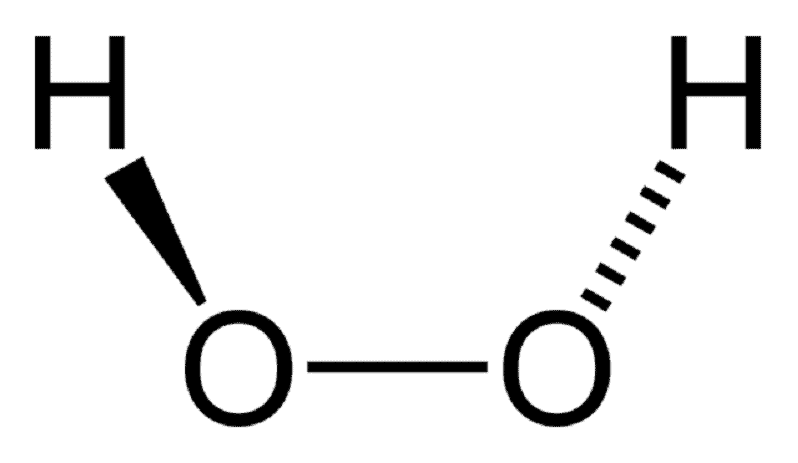No pet parent wants to ever find themselves inducing vomiting in their pet. Yet, sometimes doing that can mean life and death for your pet.
A good example is walking on your dog chomping on the tomato plant in the garden or munching away on your bars of chocolates.
The first order of business would be to induce vomiting and get the dog to expel whatever is in her system.
One of the common substances to induce vomiting is hydrogen peroxide. It is readily available and works effectively in most instances.
After reaching out and giving your doggie the correct dosage, you wait for the magic to happen.
A few minutes then a few hours later and the pet has not thrown up yet.
What is going on?
Read on for the answer and more information on the topic.
What’s The Deal with Hydrogen Peroxide?

Hydrogen peroxide is not new to many homes. Most people have it in their medicine cabinet.
It is a potent antiseptic used to dress minor cuts, burns, and scrapes to keep infections at bay.
For dogs, the antiseptic can be orally administered to get a dog to vomit when a dog owner cannot transport their pet to the vet in good time.
It works by irritating the canine’s digestive tract enough to throw the contents of the stomach.
When the antiseptic reaches the dog’s stomach area, it will react with the stomach tissue to create oxygen bubbles. These, in turn, stretch out the tummy and trigger vomiting.
The right concentration used is 3% hydrogen peroxide – nothing more than that.
If AKC recommendations are anything to go by, the right dosage is one teaspoon for ten pounds of weight. For instance, if your dog is 20lbs, the right dosage would be 2 teaspoons of the emetic.
Do not go over three teaspoons even if your doggie is 45 lb or more.
To administer hydrogen peroxide, squirt it at the back of Fido’s mouth using a turkey baster or a syringe.
Wait for 15 minutes. Your dog should be able to expel the harmful substances from her gut.
How Long Will My Dog Throw Up After Hydrogen Peroxide?

So, how long will hydrogen peroxide make a dog throw up?
Well, according to PetMD, hydrogen peroxide works fast (within 10-15 minutes) for 50% of whatever is in the dog’s tummy.
As soon as the dog starts vomiting, she can go on doing that for a solid 45 minutes, so you want to make sure she’s in a place she can throw up for that long.
If nothing happens within the first 15 minutes, give another dose and wait some more.
If nothing happens still, it’s definitely time to call the vet or the Pet Poison Helpline.
What Happens When A Dog Doesn’t Vomit?

Hydrogen peroxide works great in some instances but sadly, it doesn’t offer the intended results sometimes.
Here are some of the reasons a dog doesn’t vomit after ingesting hydrogen peroxide.
1. Wrong Dosage
First things first, when your dog fails to vomit despite giving hydrogen peroxide, seek to find out if the dosage is right.
In a bid to keep their pets safe, some dog owners give too small amounts that don’t cause enough irritation to induce vomiting.
So, how much hydrogen peroxide should be used to induce vomiting in dogs?
Of course, too much of it is utterly toxic but too little will not get you anywhere either.
Check to confirm whether you have offered the right dosage which is 1 teaspoon per 10 pounds of body weight.
For dogs of over 45 lb, maintain a constant dose of 3 teaspoons.
2. No Food In The Gut
A hungry pup has a hard time throwing up any content in his tummy. The reason is simple: food creates a safe passage for the object swallowed.
It removes any friction and gives the object a smooth journey back up.
In addition, when hydrogen peroxide reacts with the food, it creates more bubbles that make the expelling process easier and hassle-free.
Without any food in the tummy, vomiting will be a painful process for your doggie. There are fewer bubbles to push the food.
Increased friction doesn’t help things either. If the dog is trying to expel something like metal, it may be too hard and painful.
3. Timing
The time to induce vomiting also plays a key role in the success (or lack thereof) when using hydrogen peroxide.
The longer you wait, the further the object travels through the digestive tracts and ultimately the harder it gets to expel it orally.
Essentially, you want to induce vomiting in less than two hours after ingestion of the harmful object.
When the object is in the stomach, the peroxide can irritate the lining easier and cause vomiting.
4. Object Swallowed
No matter how hard you work to induce vomiting, some objects will not budge.
Take for instance a liquid. If your pup drinks chocolate tea, her body will quickly absorb it.
Big objects can get stuck in the throat or the intestines making it hard to throw up.
If the dog shows signs of distress and incredible pain, don’t force her to vomit.
Instead, rush her to the vet. Her life may very well depend on it.
5. Your Dog Needs Another Emetic
This is not the best news for you but sometimes hydrogen peroxide is just too ineffective for your doggie.
In such a case, the dog may require a more potent emetic.
It happens to the best of dogs so don’t panic. Simply rush to the vet and get help.
What Happens If You Give A Dog Too Much Hydrogen Peroxide?

Can hydrogen peroxide kill a dog?
Well, hydrogen peroxide may be a powerful emetic but it has its downsides.
Too much of it can do a number on your dog’s system. Mild effects include poor appetite and continued vomiting. Antacids should be able to take care of this.
Although rare, too much hydrogen peroxide can also cause severe gastritis, stomach ulcers, inflammation of the stomach, ulceration, and bleeding.
It doesn’t stop there. If your dog ingests copious amounts of hydrogen peroxide, she risks gas emboli or simply an air clot in her blood vessels.
As said earlier, the emetic will react with stomach tissue to release oxygen bubbles. The excess gas can be absorbed by the stomach tissue causing embolism which can be fatal.
Not to scare you but if your dog ingests too much hydrogen peroxide, rush her to the emergency room. If you wait too long, her tummy may very well rupture causing death.
How Long After Hydrogen Peroxide Can I Feed My Dog?

The timing depends on whether your dog has vomited or not after the hydrogen peroxide administration.
If your dog doesn’t vomit, several factors could be at play, as highlighted above.
In such cases, it’s crucial to promptly seek professional help from your vet.
On the other hand, if your dog has vomited, begin by offering him a small amount of water since rehydration is essential after vomiting.
Afterward, monitor his behavior for a few hours—up to 6 hours—before reintroducing food.
If there are no abnormal reactions during this time, you can gradually reintroduce bland food.
Start with small portions and increase the quantity with each meal until your dog returns to his regular diet.
Remember, it’s essential to consult with your vet to ensure your dog’s safety and to receive guidance on resuming his normal feeding routine after inducing vomiting with hydrogen peroxide.
Final Thoughts
In their passion for exploring their environments, dogs sometimes ingest harmful substances. These range from metals to stones and toxic plants.
Hydrogen peroxide can come in handy to induce vomiting in such a case.
However, if your dog doesn’t vomit after giving two doses, always call the vet.
Related Posts:
Why Is My Dog Throwing Up Undigested Food Hours After Eating?
How to Make A Dog Vomit With Baking Soda
As an Amazon Associate, we may receive a small commission from qualifying purchases but at no extra cost to you. Learn more. Amazon and the Amazon logo are trademarks of Amazon.com, Inc, or its affiliates.

